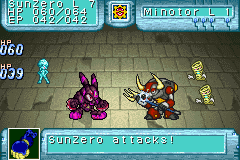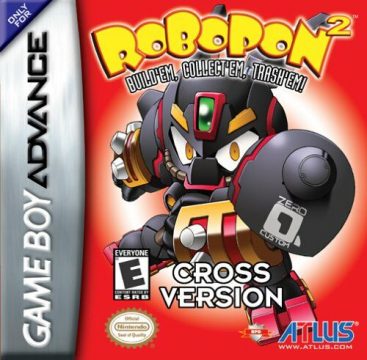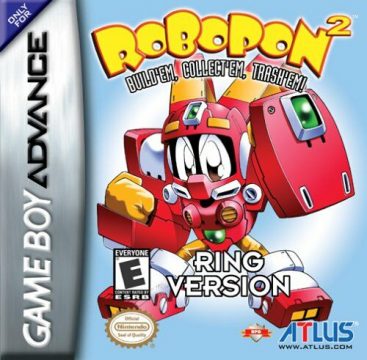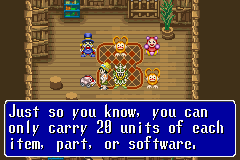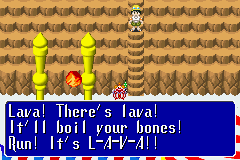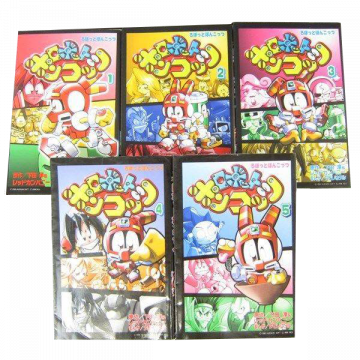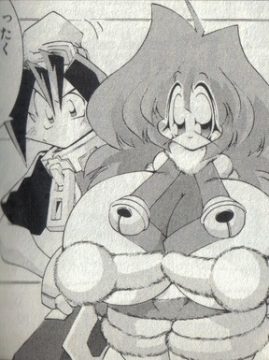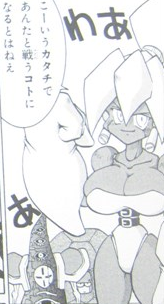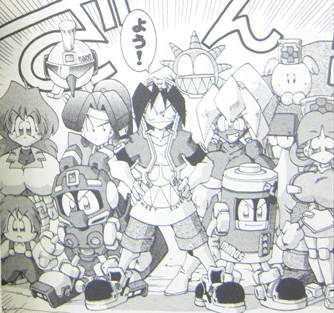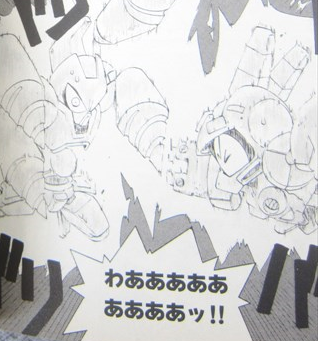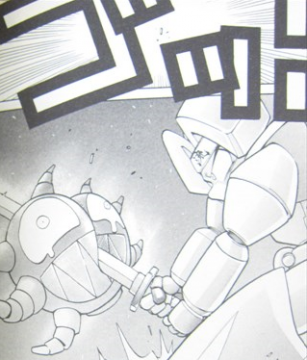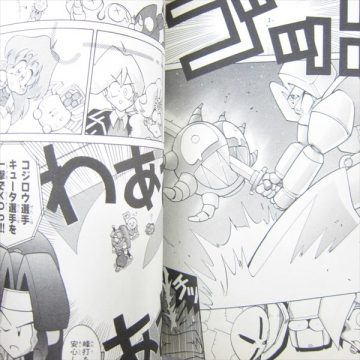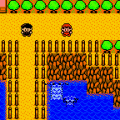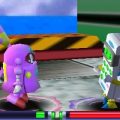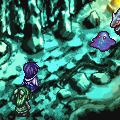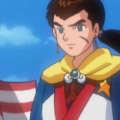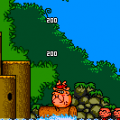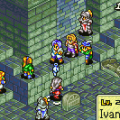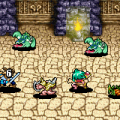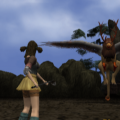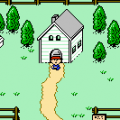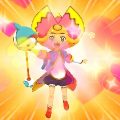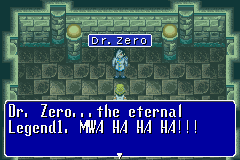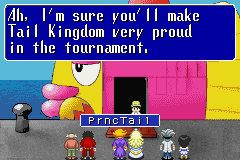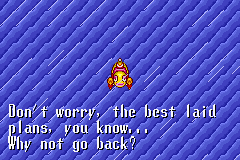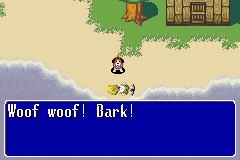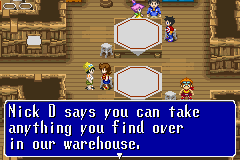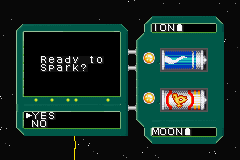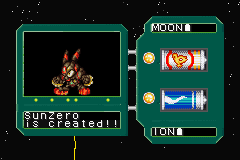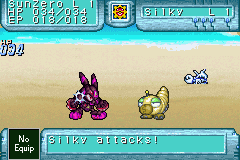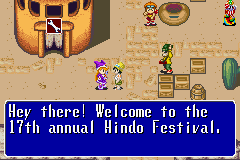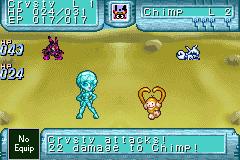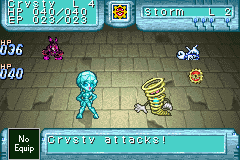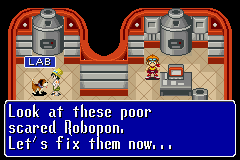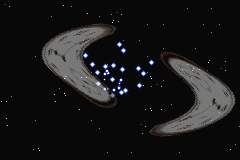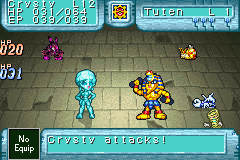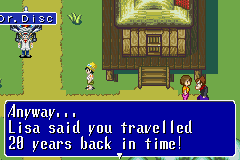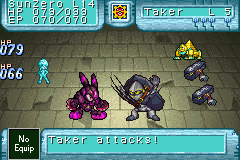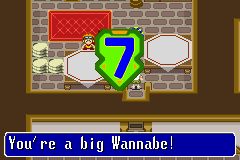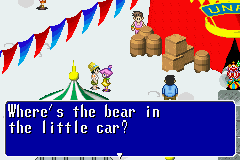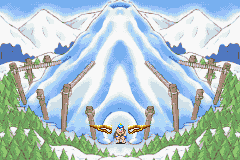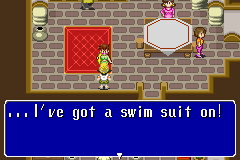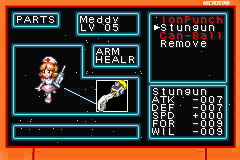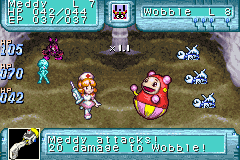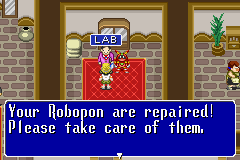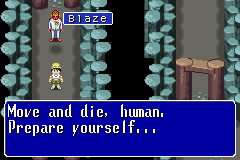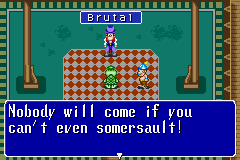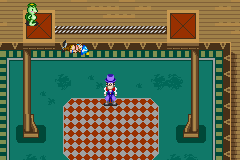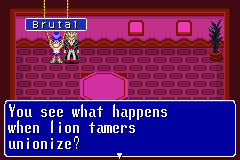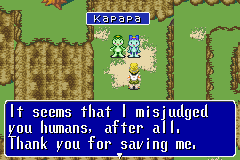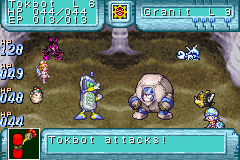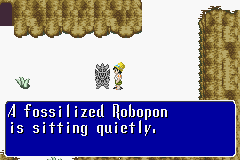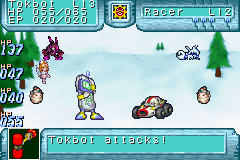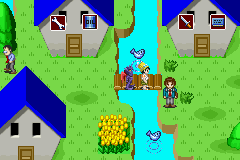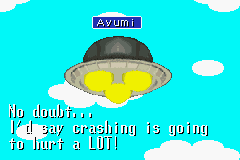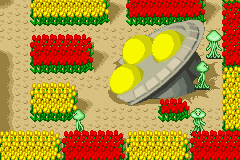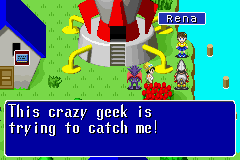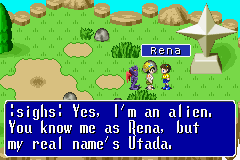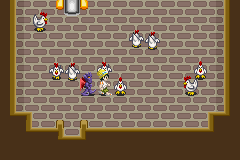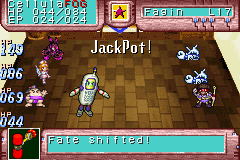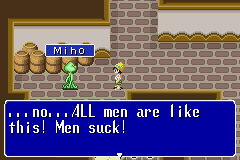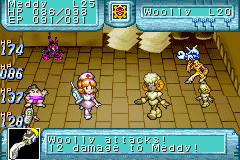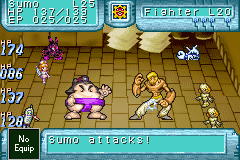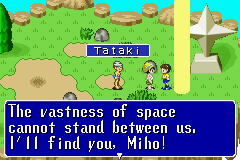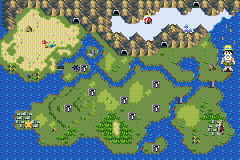- Robopon
- Robot Ponkottsu 64
- Robopon 2
Robopon 2 begins appropriately by recreating the original’s finale. Right where the game concludes, Prince Tail informs Cody that a new tournament strictly for Legend 1’s is being held in Majiko. He must sail to the south to using the fish submarine from Robot Ponkottsu 64, a nice tie-in that tries to give the game some narrative consistency. Sadly, Cody forgets his Robopon back on Porombo Island, and before he can turn back, a furious storm leaves the vessel sunk and Cody stranded on Majiko.
It’s pretty clear from the outset that Robopon 2 is trying to craft it’s own identity. The wacky story elements from Robopon are brought to the forefront: Cody must travel to different islands to defeat a new set of ranked Legends, but he’s constantly traveling back in time to fix whatever problems afflict each island’s present. In addition to defeating whatever malevolent force threatens the past, Cody must gather the XStones along the way before he can challenge anyone to increase his Legend rank. Cutscenes occur in greater frequency and flesh out the dialogue a lot more than previous Robopon titles, although there’s not any real depth to the proceedings aside from gags.
Still, there’s a wealth of said gags. An irreverent tone stretches throughout Robopon 2. Settings like a rooftop carnival and an Egyptian temple are pretty wacky, but the translation itself is spiced with pop culture references and silly dialogue.
Narrative aside, the biggest changes are mostly related to the Robopon themselves. While the majority of character designs remain the same, there are no more magnets to catch wild Robopon. Players instead fuse together batteries to create one of 183 different Robopon. Combat is now comprised of mass four on four Robopon battles. Due to more fluid and brief animations, these still move much faster than the three minute fights from the original game. Elemental weaknesses play less of a role in how fights turn out, but early boss battles actually present challenges as enemy Robopon will often be equipped with a variety of powerful software.
The initial half of the game presents very little challenge aside from tedious backtracking, but once you get to a Romeo and Juliet influenced story arc, the difficulty ramps up. Those ignoring the construction system and beefing up their initial party will be thoroughly spanked. Making advanced fusions is crucial from here on out, although the game doesn’t necessitate grinding until the very last dungeon.
Robopon 2 definitely feels more like a complete game, but that also destroys what charm the original offered. There’s no grotesque color palette, stolen Pokémon sprites, or beeping noises coming out of the cartridge. Robopon 1 is a bizarre and often awful monstrosity; Robopon 2 is wholly competent yet mostly bland. Hardcore monster-breeding addicts might find a lot to like with the Working Designs style humor and unique fusion system, but the rest will probably drop out after the first act.
Published by Hudson in September 2001, there were no special edition versions of Robopon 2 outside of the original Ring and Cross versions. It again was published by Atlus in North America and received no European release.
Robot Ponkottsu Manga
As with any good Pokémon rip off, a Robot Ponkottsu manga serial appeared in Comic Bon Bon within a year of Robopon‘s debut. Serialized throughout the late 1990s and early 2000s, three series appeared: Robot Ponkots, Robot Ponkotts 2, and Robot Ponkotts Go!
Following the storyline of Robopon and progressing through Robopon 2, it follows Kobikku Yusuke, Cody’s Japanese namesake. Yusuke becomes president of his grandfather’s Robopon company and eventually goes on to defeat the Legend 7 while occasionally going on other adventures that depart from the games’ storyline.
One thing often noted about the manga is the overly sexualized portrayal of women. Despite being made for children, all female characters have very large breasts. Author Hataru Tamori filled the comics with large, globe-like masses with huge protruding nipples.
Compendiums of the serial were released in 2013 and 2015. Although none have ever been translated into English, the obscurity of the video games stateside and lack of any European releases leaves the manga without any real audience.
Legacy (or Lack Thereof)
Perhaps the biggest factor in Robopon‘s lack of success outside Japan is a western focus on authenticity. The main handheld games in the series do very little to break from the Pokémon mold outside of wacky humor, and critics immediately derided them for their copied elements. To most, being an outright clone is grounds for immediate dismissal because its disingenuous.
Even worse, there was no massive franchise that sprung from the game. Series like Digimon and Monster Rancherwere able to ape Pokémon‘s multimedia stature with an anime or other merchandise. Without any way to capture kid’s attention aside from a few print ads, Robopon was bound to be forgotten.
The real question is, does Robopon deserve anything more than obscurity? While the cheap gimmicks and zany story arcs are unique, there’s little to entice anyone aside from Pokémon diehards or people who obsessively seek novelty. If using a real life TV remote to open a video game chest sounds like something you have to do before you die, then welcome to heaven.
Outside of the Pokémon Trading Card Game, Hudson never touched the genre again. Red Entertainment continues to create a variety of RPGs, generally teaming with other developers, including working on Nintendo’s own Pokémonclone Fossil Fighters.
Links:
Atlus’s Official Robopon 2 Site
GB Kiss FAQ on Base Necatris
Robot Ponkottsu Manga Author Hataru Tamori’s Twitter
